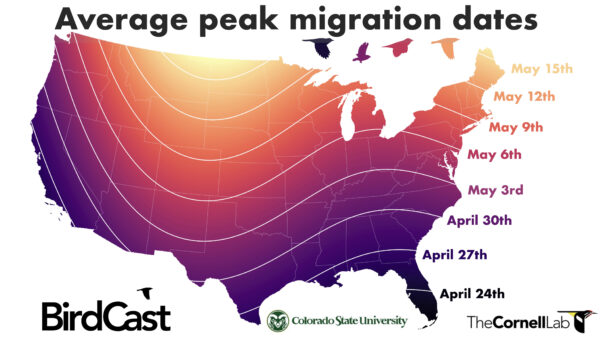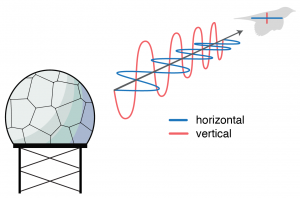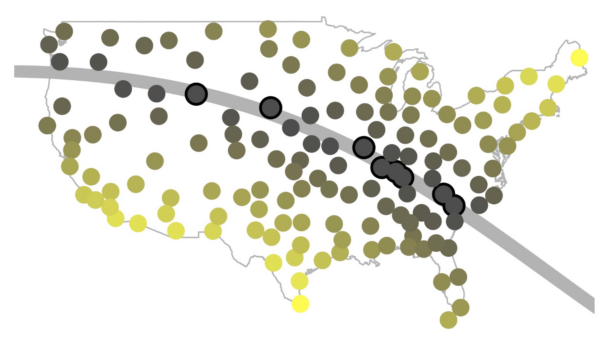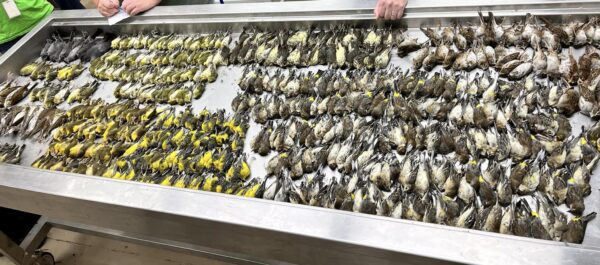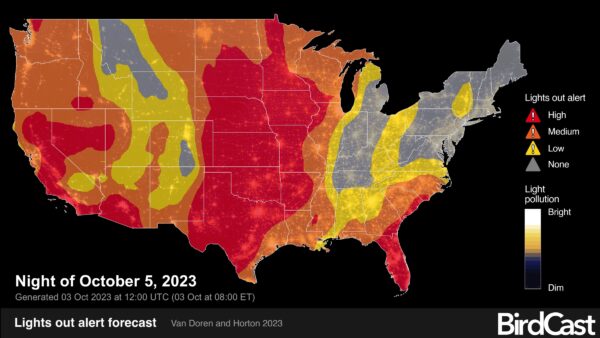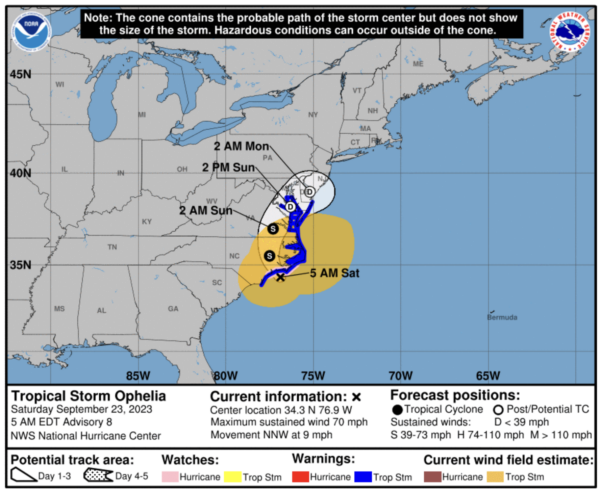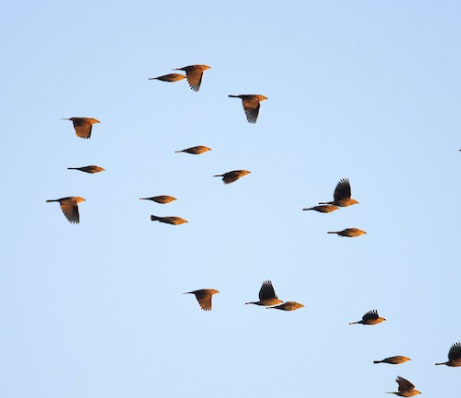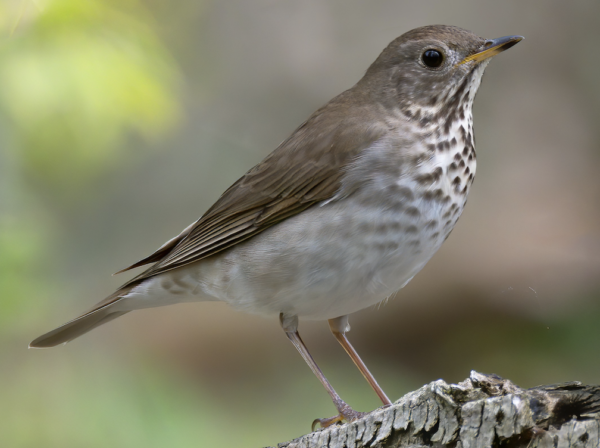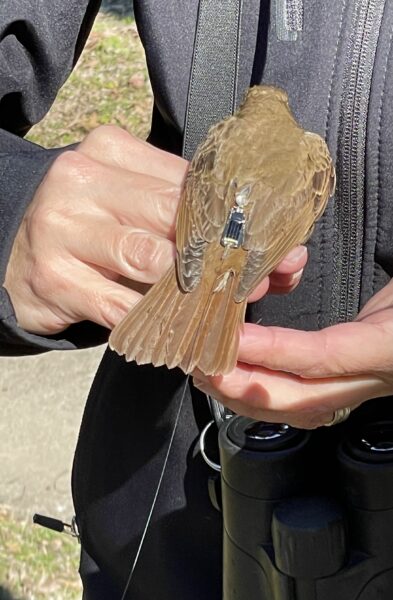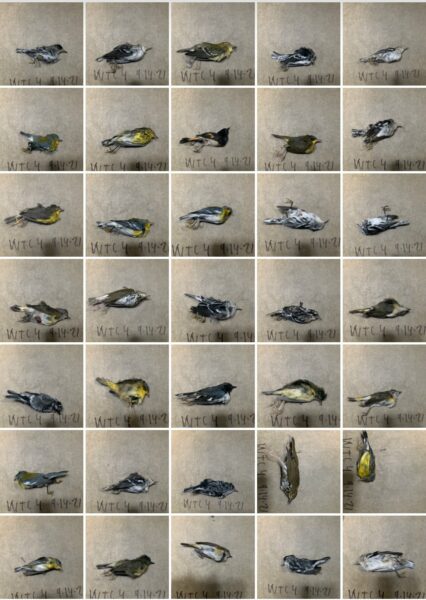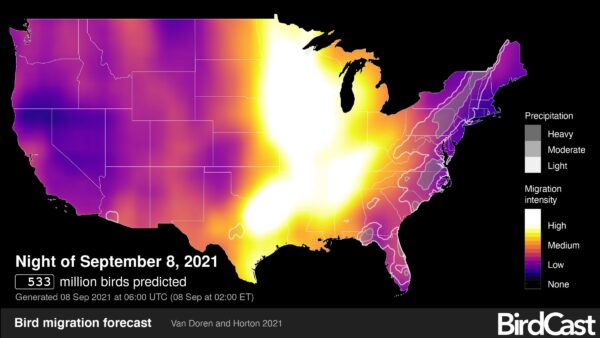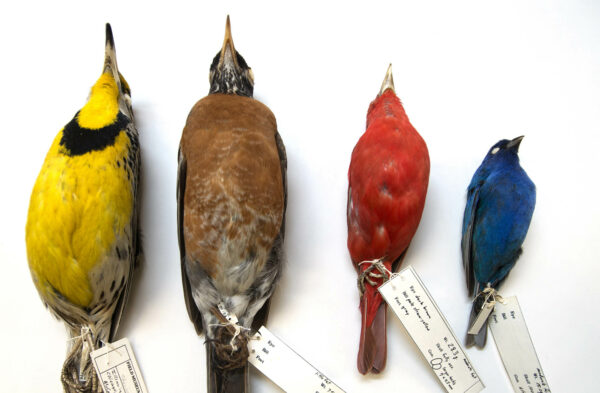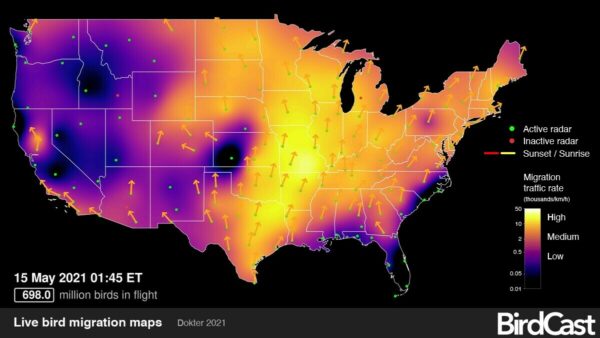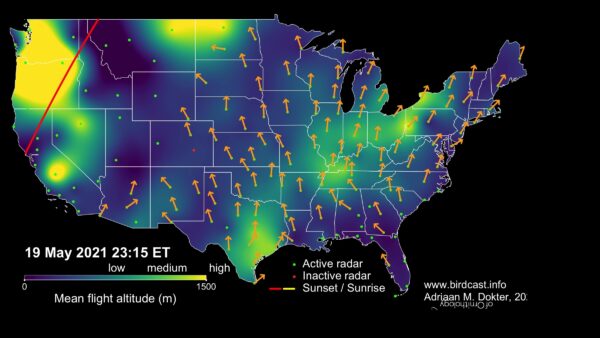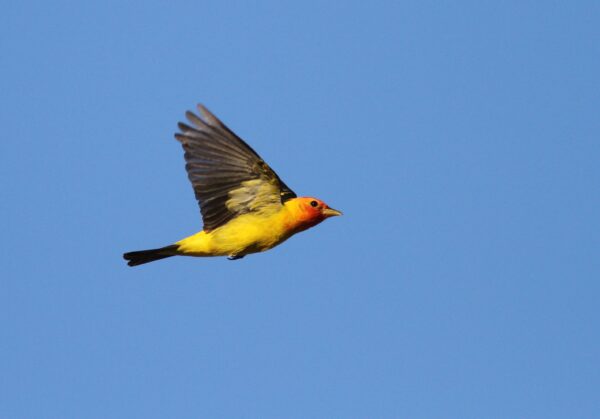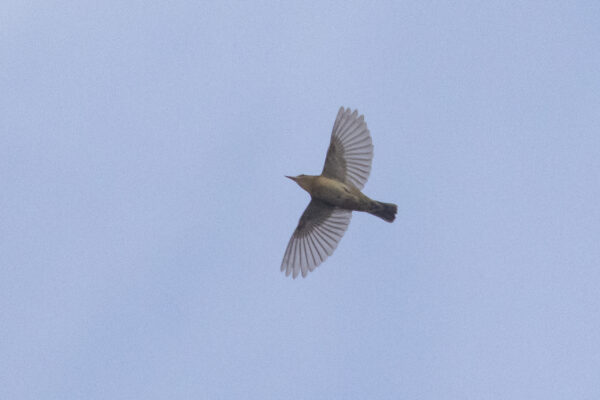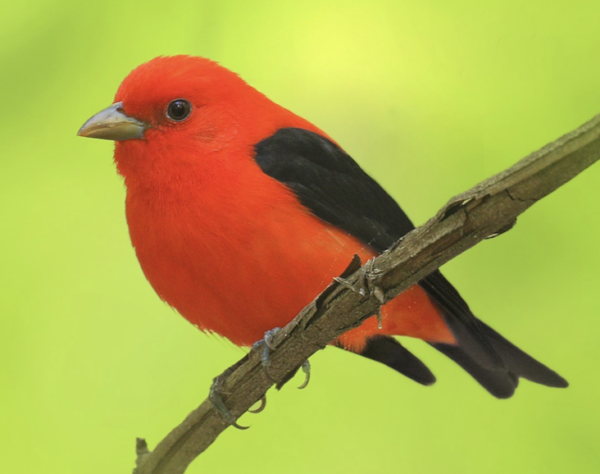News: Migration
Spring migration is in full swing, and knowing when peak migration will occur in your area is valuable information! Here we provide a sortable table of peak periods of spring bird migration for the largest cities by human population size in the contiguous US. Read more...
As a reminder to what the team is working on here at BirdCast, we return to a previous post we wrote. With spring soon arriving and preparations for migration underway, here is a primer on what we do. We turn weather radar data into information on the numbers and flight directions of birds aloft in order to expand the understanding of migratory bird movement. After several years (and hundreds of posts) describing migration, species on the move, and unique migration events, we want you to have a better understanding of what happens at BirdCast. Here is a brief overview and a behind-the-scenes look at the ways we apply radar data to study bird migration. Read more...
The BirdCast team is reposting two accounts originally written about the August 2017 eclipse. This is the second of these posts, detailing results from our 2018 publication using radar to study biological activity in the air during the eclipse ... with radar! Read more...
In recent days we've hit the highest highs and lowest lows of this migration season. Here, we speak briefly about the last week's events and highlight the upcoming movements and action alerts for the next three days. Read more...
Large numbers of birds died in collisions with glass and structures while major migration was occurring in the Chicago area on the night of 4-5 October 2023. Turn off your lights, make your windows bird friendly! Read more...
The BirdCast team has a growing number of friends and family members, and for today's post, we introduce Diya Balagopal, a high school sophomore from Frisco, Texas. During the month of October, we will highlight Lights Out alert forecasts to support bird conservation by reducing nighttime lighting during migration season. The small act of turning off lights can make a big difference for protecting nocturnally migrating birds! Read more...
Tropical Storm Ophelia made landfall this morning in North Carolina, and, with safety first we are tracking observations of storm-driven birds reported in the wake of its passage. Read more...
BirdCast is ready to kickoff its fall 2023 migration season! It’s time to check out our migration tools to see what’s on the move in your area. Read more...
An interesting pattern of Gray-cheeked Thrush arrivals in the central US during April led the BirdCast team to investigate a potential explanation. We looked to the wind. Read more...
The recent release of the BirdCast Migration Dashboard inspired much excitement in a broad array of team members, collaborators, colleagues, friends, family, and followers. There are many ways to apply the information you can explore with the dashboard, but one intriguing possibility comes to us from Laura Cook in this post about tracking two Hermit Thrushes. Read more...
The new BirdCast Migration Dashboard is here, providing nocturnal bird migration data for counties and states in the contiguous US! This tool offers new capabilities to investigate birds' movements in detail and at scales that complement our existing national forecast and live migration maps. Try it out today to explore patterns of nocturnal bird migration in your area! Read more...
BirdCast is deeply disturbed by the mass bird collision events that occurred earlier this week in Manhattan. Light pollution and poor flying conditions on a night of intense migration contributed to these events. There are essentials actions we can take to prevent these types of events: turning off all non-essential lights, especially during migration periods, to reduce birds' attraction to and disorientation by them, and making buildings bird friendly. See our recommendations for turning off lights below. Read more...
The BirdCast forecast model predicts just over half a billion birds to be flying during peak flight hours tonight! Turn out your lights! Go birding! Read more...
The BirdCast team led a study published today that uses two decades of data to show that migration magnitude, light output, and wind conditions are important predictors of collisions at a high-profile building in Chicago. This research has global implications for conservation action campaigns aimed at eliminating an important cause of bird mortality: light pollution and resulting collisions with structures. Read more...
The spring of 2021 offered many migration highlights, and here we showcase the top 5 mega-flights of this soon-to-be-in-the-books season. Read more...
During the past week, enormous numbers of birds have been migrating through the US. But birders seeking massive concentrations of birds in their favorite habitats may not have experienced the fallouts of their dreams. A new visualization depicting the altitude of migration, when viewed in conjunction with the distribution of migration traffic, highlights an explanation. Read more...
Southern California affords some excellent opportunities to see continuing diurnal migration of typically nocturnal migrants. Kicking off in Spring 2021, the Bear Divide Migration Count by the Moore Lab of Zoology at Occidental College is one of these opportunities! Read more...
For more than 50 years US radar aeroecology has largely been restricted to the lower 48 states — until now. Just out in the Proceedings of the Royal Society B, the BirdCast team publishes the first weather surveillance radar studies of Alaskan bird migration. Read more...
During the week of April 19-25, several weather events set up excellent conditions for observing visible migration, mostly of wood-warblers, including this Worm-eating Warbler, migrating along Florida’s east coast. Our colleague Jacob Drucker reports on his observations on the ground! Read more...
Tanagers bring the most incredible splashes of color to spring migration across the continent. Check out the movements of three migratory species over the last month. Read more...

